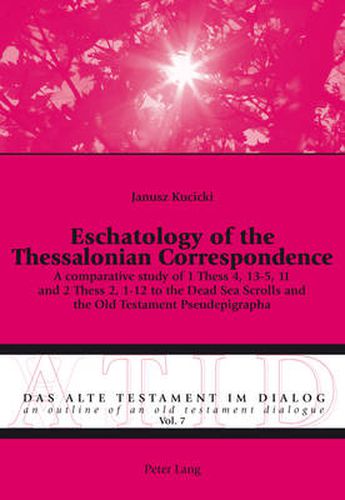Readings Newsletter
Become a Readings Member to make your shopping experience even easier.
Sign in or sign up for free!
You’re not far away from qualifying for FREE standard shipping within Australia
You’ve qualified for FREE standard shipping within Australia
The cart is loading…






This title is printed to order. This book may have been self-published. If so, we cannot guarantee the quality of the content. In the main most books will have gone through the editing process however some may not. We therefore suggest that you be aware of this before ordering this book. If in doubt check either the author or publisher’s details as we are unable to accept any returns unless they are faulty. Please contact us if you have any questions.
The book refers to universal eschatology contained in the Letters to the Thessalonians (1 Thess 4, 13-5, 11; 2 Thess 2, 1-12). The whole material is divided in two groups (eschatological motifs and apocalyptic motifs). Each of the motifs is analysed in the Biblical context and in the Intertestamental Literature context (the Old Testament Pseudepigrapha and the Qumran Literature). The exegetical analysis and the comparative analysis show similarity and diversity of the way Paul used the motifs. They also show which motifs were created or extensively modified by Paul in order to contribute to the creation of Christian eschatology. After presentation of the importance of eschatological topics in the 1-2 Thess (chapter I), the analyses of prodroms (chapter II) and events connected with the parousia (chapter III) indicate the way of using each of the motifs in different traditions. Based on results of the analyses, the Jewish background and Paul’s original contribution to the New Testament eschatology are presented in chapter IV.
$9.00 standard shipping within Australia
FREE standard shipping within Australia for orders over $100.00
Express & International shipping calculated at checkout
This title is printed to order. This book may have been self-published. If so, we cannot guarantee the quality of the content. In the main most books will have gone through the editing process however some may not. We therefore suggest that you be aware of this before ordering this book. If in doubt check either the author or publisher’s details as we are unable to accept any returns unless they are faulty. Please contact us if you have any questions.
The book refers to universal eschatology contained in the Letters to the Thessalonians (1 Thess 4, 13-5, 11; 2 Thess 2, 1-12). The whole material is divided in two groups (eschatological motifs and apocalyptic motifs). Each of the motifs is analysed in the Biblical context and in the Intertestamental Literature context (the Old Testament Pseudepigrapha and the Qumran Literature). The exegetical analysis and the comparative analysis show similarity and diversity of the way Paul used the motifs. They also show which motifs were created or extensively modified by Paul in order to contribute to the creation of Christian eschatology. After presentation of the importance of eschatological topics in the 1-2 Thess (chapter I), the analyses of prodroms (chapter II) and events connected with the parousia (chapter III) indicate the way of using each of the motifs in different traditions. Based on results of the analyses, the Jewish background and Paul’s original contribution to the New Testament eschatology are presented in chapter IV.